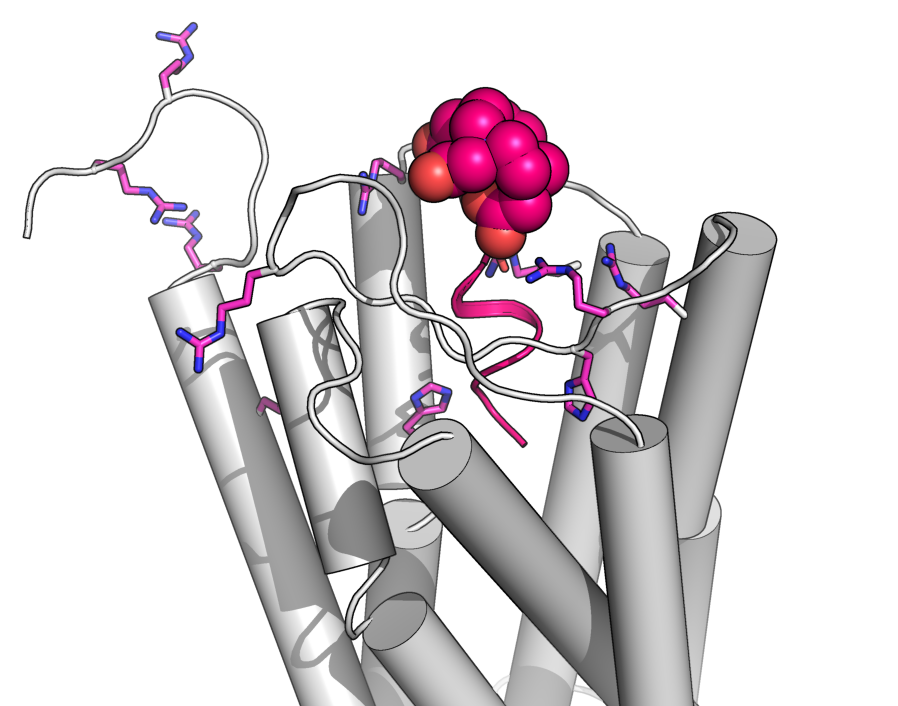Elucidating the structure-activity relationship of the pentaglutamic acid sequence of minigastrin with the cholecystokinin receptor subtype 2
Radiolabelled minigastrin derivatives are used to target the cholecystokinine receptor subtype 2 (CCK2R) which is overexpressed on neuroendocrine tumors.[1] Binding behavior as well as undesired kidney uptake are influenced by the pentaglutamic acid sequence of minigastrin, but the interactions and structural influences on a molecular level are not fully understood. We replaced the pentaglutamic acid sequence in minigastrin with linkers differing in their structural features, their flexibility and the number of anionic charges in order to elucidate the structure-activity relationship of this sequence with the CCK2R. Specifically, a flexible aliphatic linker, a linker with only three D-Glu residues and a structured linker with four adjacent β3-glutamic acid residues were evaluated and compared to the lead compound PP-F11N (DOTA-[D-Glu1-6, Nle11]gastrin-13). The minigastrin derivatives were conjugated to 1,4,7,10-tetraazacyclododecane-1,4,7,10-tetraacetic acid (DOTA), which allowed radiolabelling with 177Lutetium. The radiolabelled ligands were examined for their in vitro properties (IC50, internalization and serum stability) and for their in vivo behavior in tumor bearing mice with a human medullary thyroid cancer cell line (MZ-CRC1). Structural features of the ligands were evaluated by molecular modelling and CD-spectroscopy.

The obtained IC50 values are in the low nanomolar range (15-35 nM), with the aliphatic elongated peptide as the only exception with almost one order of magnitude higher values (>100 nM). In vitro internalization into MZ-CRC1 cells and in vivo tumor uptake, as well as human blood plasma stability increased in the following order: no linker, aliphatic sequence, (D-Glu)3 sequence, (β3-Glu)4 sequence, (D-Glu)6 sequence. The tumor uptake was dependent on the amount of anionic charges and structural features present. We envision that correlating the observed biological properties with structural features will lead to a better understanding of the molecular structural binding behaviour of peptidic CCK2R ligands which enables an improved rational design of such ligands.
[1] Laverman, et al., European Journal of Nuclear Medicine and Molecular Imaging 2011, 38 (8), 1410-1416.